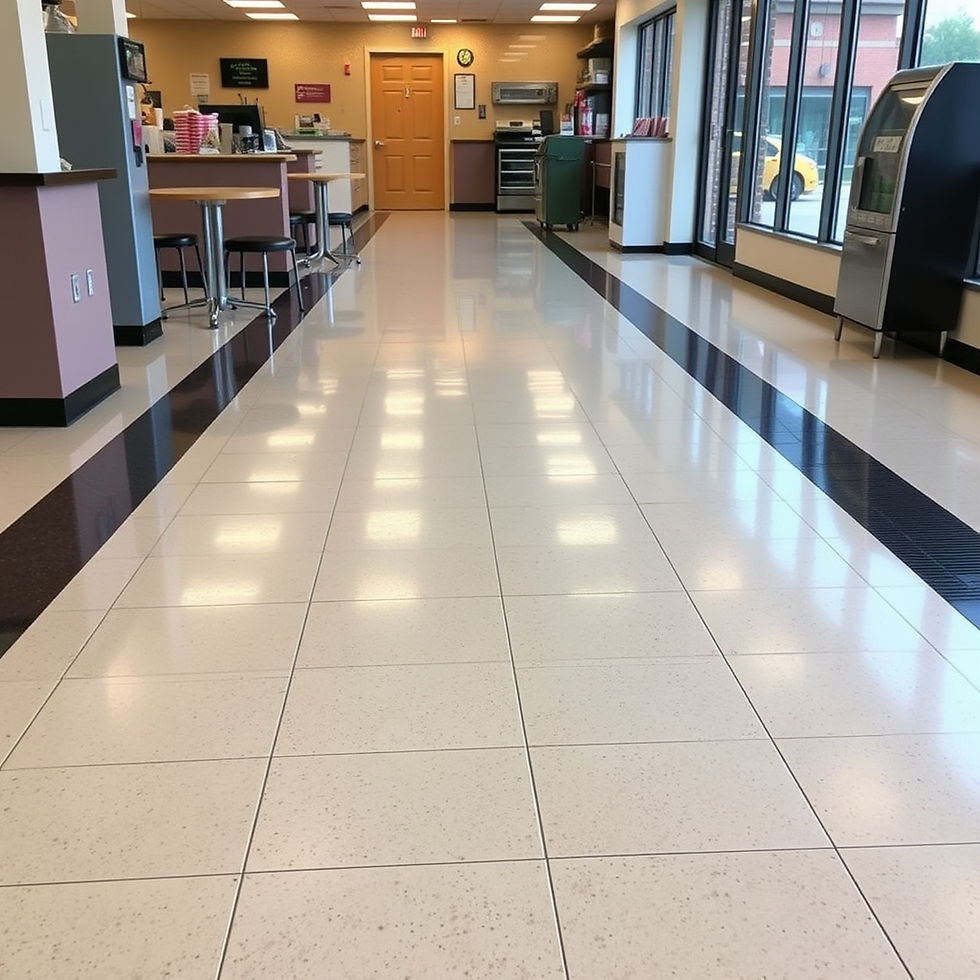Key Cleaning Practices for Maintaining Food Safety
- Altamira Maintenance

- Oct 16
- 4 min read
At Altamira Maintenance / Janitorial Ltd., we understand that maintaining food safety is one of the most important responsibilities in any food service environment. Proper cleaning practices prevent contamination, reduce the risk of foodborne illnesses, and ensure a safe dining experience for your customers.
In the restaurant industry, hygiene standards are not only about appearance — they are about protecting public health. That’s why we take cleaning seriously. With years of experience serving restaurants and food establishments across Canada, we know that consistent, professional cleaning makes all the difference in maintaining food safety and regulatory compliance.
Importance of Restaurant Cleaning for Food Safety
Restaurant cleaning directly impacts food safety by preventing cross-contamination and controlling harmful bacteria. Food preparation areas, utensils, and equipment can quickly become breeding grounds for pathogens if not cleaned properly. These microorganisms can cause food poisoning, harm customers, and damage your restaurant’s reputation.
We follow and help our clients establish strict cleaning schedules that include daily, weekly, and monthly tasks. For example, we always clean and sanitize cutting boards after each use to prevent bacteria from transferring from raw meat to vegetables. We also ensure refrigeration units are thoroughly cleaned and maintained to keep food at safe temperatures and reduce spoilage.
Our team uses food-safe cleaning agents, advanced equipment, and industry-approved sanitizing practices to maintain the highest level of hygiene in every space we service.
Some of our key cleaning practices include:
Using food-safe cleaning agents and sanitizers
Cleaning surfaces before and after food preparation
Proper handwashing and glove use
Regular cleaning of kitchen equipment and utensils
By following these steps consistently, we help our restaurant partners create hygienic environments that promote both food safety and customer confidence.

Effective Restaurant Cleaning Techniques and Tools
Using the right techniques and tools is essential for thorough cleaning in a restaurant setting. Different surfaces and equipment require specific cleaning methods to ensure contaminants are completely removed.
At Altamira, we apply industry-proven methods and modern cleaning technologies to deliver deep, effective results. Our approach is designed to meet the strict demands of health authorities while ensuring kitchens operate efficiently and safely.
We use several core cleaning techniques, including:
Wet Cleaning: Using water and detergent to remove dirt and food residues from most surfaces.
Dry Cleaning: Sweeping or vacuuming to remove loose debris before wet cleaning.
Sanitizing: Applying food-safe chemicals to kill bacteria after cleaning.
Disinfecting: Using stronger agents to eliminate viruses and fungi in high-risk areas.
Our recommended cleaning tools include:
Microfiber cloths that capture bacteria instead of spreading it
Color-coded utensils and cutting boards to prevent cross-contamination
High-pressure steam cleaners for deep cleaning ovens and grills
Food-safe sanitizers approved by health authorities
We also maintain and sanitize our tools regularly — because a dirty mop or cloth can spread contamination rather than remove it.

What is the 20 Minute Rule in Cleaning?
One of the most practical rules we use in food safety cleaning is the 20-minute rule. It means that any food spill or residue should be cleaned within 20 minutes to prevent bacterial growth and contamination.
Why 20 minutes? Because bacteria can multiply rapidly on food residues left at room temperature. By cleaning up spills immediately, we prevent pathogens like Salmonella or E. coli from spreading to other surfaces or foods.
We train our cleaning teams — and encourage our clients’ staff — to clean as they go. This habit not only improves food safety but also keeps the kitchen organized and efficient during busy service hours.

Best Practices for Cleaning Food Contact Surfaces
Food contact surfaces such as cutting boards, knives, and preparation tables deserve special attention. These areas come into direct contact with food and can easily transfer bacteria if not cleaned correctly.
Here’s our step-by-step approach to cleaning food contact surfaces:
Remove debris: We start by scraping off all food particles.
Wash: We use hot water and detergent to clean the surface thoroughly.
Rinse: We rinse off all soap residues with clean water.
Sanitize: We apply a food-safe sanitizer and allow the surface to air dry.
Inspect: We check for cracks or damage where bacteria can hide and recommend replacement if needed.
We also advise restaurants to use separate cutting boards for raw and cooked foods and prefer stainless steel surfaces because they’re non-porous and easy to clean.
Training Staff on Cleaning Protocols
Even the best cleaning protocols won’t work without proper training. That’s why we invest heavily in training our staff to understand the importance of cleaning for food safety and to follow the right procedures every time.
Our training covers:
The difference between cleaning, sanitizing, and disinfecting
Correct dilution and safe use of cleaning chemicals
The 20-minute rule and how to apply it
Safe handling of tools and equipment
Cleaning procedures for all areas of a restaurant
We also conduct regular refresher courses and on-site supervision to maintain consistency and accountability. Our goal is to foster a culture of cleanliness and food safety in every restaurant we serve.
Maintaining Cleanliness Beyond the Kitchen
Food safety doesn’t end in the kitchen — it extends to the entire restaurant. Dining areas, restrooms, and storage spaces also need to be kept clean to prevent contamination and ensure a great experience for guests.
We provide full-service restaurant cleaning, covering everything from kitchen hoods to dining floors. Our comprehensive approach ensures that every corner of your restaurant meets health and safety standards.
Here’s how we maintain different areas:
Tables and chairs: Cleaned and sanitized after every use.
Floors: Swept and mopped regularly to remove dirt and spills.
Restrooms: Cleaned frequently and restocked with supplies.
Waste areas: Kept clean and odor-free to prevent pest issues.
Our Promise
At Altamira Maintenance / Janitorial Ltd., our mission is simple — to help restaurants maintain the highest level of cleanliness and food safety every single day.
By following consistent cleaning practices, using the right tools, and continuously training our staff, we help our clients protect their customers, their reputation, and their peace of mind.
Food safety starts with cleanliness — and cleanliness starts with us.




Comments